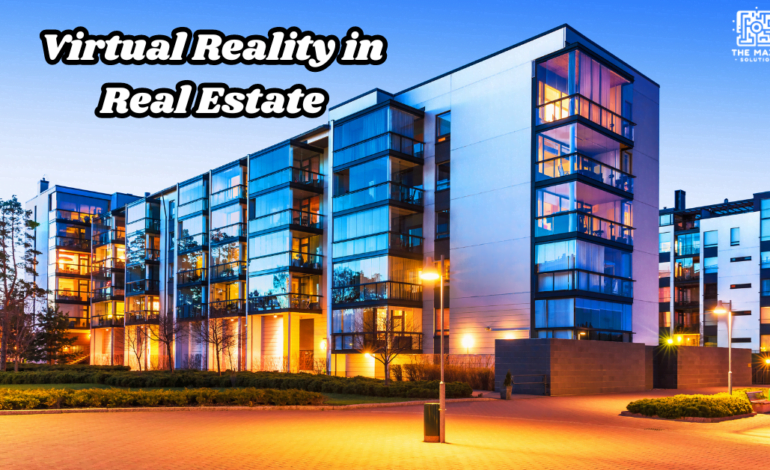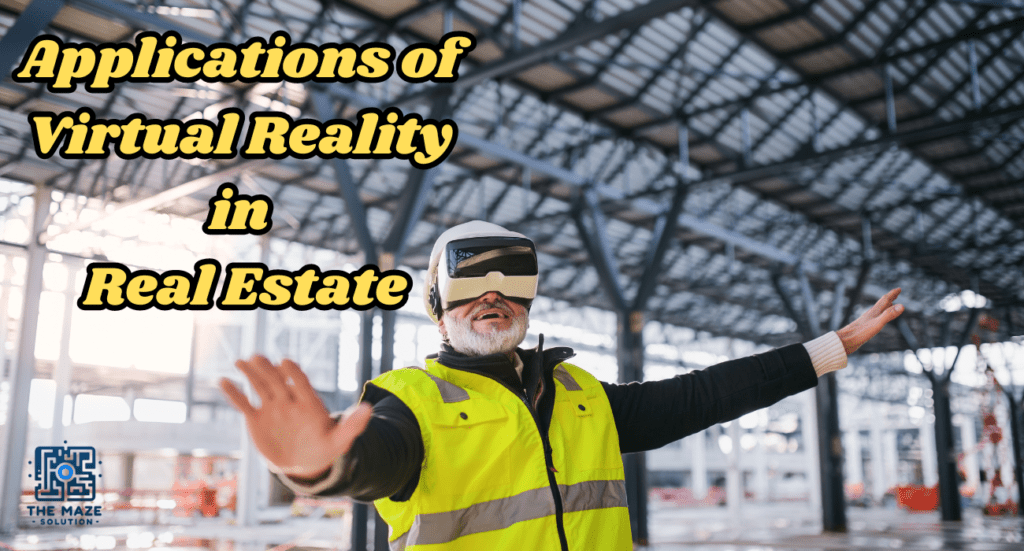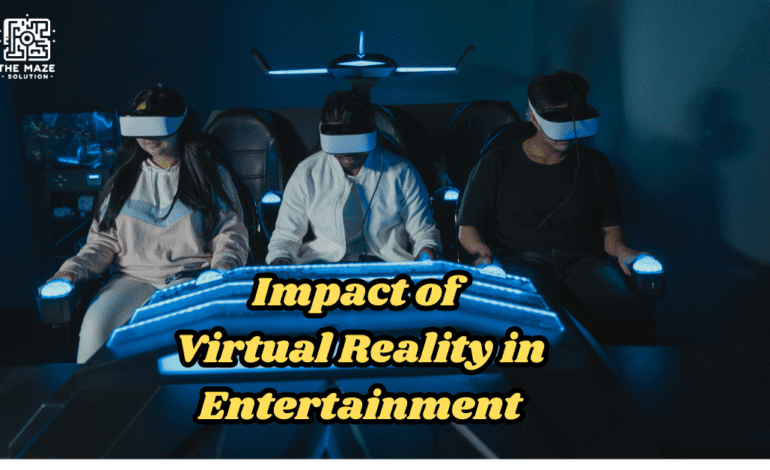Virtual Reality in Real Estate: Unlocking New Possibilities for Buyers and Sellers

In an era where technology is transforming every facet of our lives, the real estate sector is no exception. Virtual Reality in Real Estate (VR) is rapidly becoming a game-changer for real estate professionals, home buyers, and tech enthusiasts alike. Imagine exploring potential homes from the comfort of your couch or walking through a virtual property at any time of day. This blog post will explore the adoption of VR in real estate, its benefits, challenges, and predictions for the future. By the end, you’ll see why VR is not just a trend but a vital tool for the industry.
Understanding Virtual Reality in Real Estate
What is Virtual Reality (VR)?
Virtual Reality (VR) is a simulated experience that can be similar to or entirely different from the real world. Utilizing VR, users can immerse themselves in a three-dimensional environment and interact with it using specialized electronic equipment, such as headsets and gloves fitted with sensors. In the context of real estate, VR allows potential buyers to experience properties in a lifelike, interactive setting without being physically present. This technology has been applied across various industries, offering immersive learning in education, enhanced customer experiences in retail, and now, revolutionizing the way properties are bought and sold.
Evolution of VR in Real Estate
The use of VR in real estate has evolved significantly over the years. Initially, property viewings were limited to photographs and floor plans, requiring physical visits for a comprehensive understanding. However, the shift towards immersive experiences began with basic 360-degree virtual tours, which paved the way for today’s sophisticated VR applications in Virtual Reality in Real Estate. Now, potential buyers can explore properties in detail, visualize different furniture layouts, and even experience the ambiance of a property—all from their devices.
Key Applications of Virtual Reality in Real Estate

Virtual Property Tours
Virtual property tours are revolutionizing the way potential buyers explore real estate. By utilizing Virtual Reality (VR) technology, these tours allow buyers to walk through a property in a fully immersive 3D environment. This innovation eliminates the need for physical presence, meaning prospective buyers can view multiple properties from the comfort of their own home, regardless of the property’s location.
The process typically involves a VR headset or a simple web-based platform where users can navigate through rooms, explore details, and get a real sense of the property’s layout and ambiance. This is particularly beneficial in today’s fast-paced market, where time and convenience are crucial factors in the buying process. Instead of scheduling multiple appointments and traveling to different locations, buyers can explore several properties in a single sitting, saving time and resources.
For sellers, virtual property tours offer a competitive edge. Properties that feature virtual tours often stand out in listings, attracting a broader audience, including out-of-town or international buyers. The ability to showcase a property 24/7, without the constraints of physical showings, ensures that it remains in the spotlight. Additionally, the immersive nature of VR tours of Virtual Reality in Real Estate helps create a stronger emotional connection between the buyer and the property, which can lead to quicker and more confident purchasing decisions.
Virtual Staging
Virtual staging is another groundbreaking application of VR in real estate that enhances a property’s appeal by digitally furnishing and decorating spaces. Traditional staging involves physically placing furniture and decor in a home to make it more attractive to buyers, but this can be both costly and time-consuming. Virtual staging, on the other hand, offers a more flexible and cost-effective solution.
Using VR, sellers can present a home in its best possible light, showcasing different styles, color schemes, and layouts without the need for actual furniture. This digital approach allows potential buyers to see the full potential of a property, imagining how it could look when fully furnished. It’s especially useful for empty homes or those with outdated interiors, as it can transform a blank canvas into a welcoming and stylish space.
Virtual staging also allows for greater customization. Multiple versions of the same room can be created, catering to different buyer preferences. For instance, a room can be staged as a home office, a nursery, or a guest bedroom, depending on the target audience. This adaptability helps buyers form an emotional connection to the property, making it easier for them to envision living there.
Interactive Floor Plans
Interactive floor plans, when combined with VR, offer a powerful tool for understanding a property’s layout and design. Traditional 2D floor plans provide a basic overview of a property, but they often fail to convey the true sense of space and flow. By integrating VR, these floor plans come to life, allowing buyers to explore the property as if they were physically inside it.
With interactive floor plans, users can move through the property, experience the spatial relationships between rooms, and examine key architectural elements in detail. This immersive exploration helps buyers better understand the functionality of the space, whether it’s assessing how furniture will fit, understanding the flow from one room to another, or visualizing potential renovations.
This detailed level of interaction greatly enhances the decision-making process. Buyers can gain a comprehensive understanding of a property before setting foot inside, which is particularly valuable for those purchasing off-plan or from a distance. It also reduces the likelihood of surprises or disappointments during physical visits, as buyers have already gained a realistic sense of the property’s dimensions and layout.
Remote Property Viewing
Remote property viewing through VR is transforming the real estate market, particularly for international and long-distance buyers. In the past, purchasing property from afar required significant travel, time, and expense. VR eliminates these barriers by allowing buyers to experience properties virtually, regardless of their physical location.
This application is especially beneficial in today’s global real estate market, where buyers may be interested in properties located in different cities or even countries. With VR, buyers can explore multiple properties, compare them, and make informed decisions without ever leaving their home. This not only saves time and money but also expands the range of properties a buyer can consider.
For sellers, remote property viewing opens up their listings to a global audience. Properties are no longer limited to local buyers; instead, they can attract interest from potential buyers worldwide. This increased exposure can lead to faster sales and potentially higher offers, as the competition is broadened.
Moreover, remote viewing is a boon for the luxury real estate market, where buyers often seek properties in different parts of the world. It also caters to the needs of investors who may want to purchase properties in emerging markets without the need for extensive travel. In essence, VR has made the real estate market more accessible, efficient, and competitive on a global scale.
Benefits of Virtual Reality in Real Estate
Enhanced Buyer Experience
Virtual Reality in real estate provides an enriched buyer experience by offering a more personalized and interactive approach to property viewing. Buyers can immerse themselves in properties, explore details up close, and revisit homes multiple times without physical constraints. This level of engagement helps buyers feel more connected to the properties they are considering, leading to faster and more confident decision-making.
Increased Sales Efficiency
For sellers, Virtual Reality in Real Estate enhances sales efficiency by streamlining the property viewing process. Properties spend less time on the market as buyers make quicker decisions after experiencing virtual tours. Case studies have shown that listings utilizing VR often see higher engagement rates and faster sales cycles. This efficiency benefits both buyers and sellers, making the transaction process smoother and more effective.
Cost-Effective Marketing
Virtual Reality in Real Estate proves to be a cost-effective marketing tool for real estate professionals. Traditional methods often involve high expenses associated with print advertising, open houses, and physical staging. In contrast, VR-driven strategies provide a high return on investment by showcasing properties to a larger audience with less financial outlay. The immersive nature of VR captures buyers’ attention and keeps them engaged longer, increasing the likelihood of a sale.
Accessibility and Convenience
One of the standout advantages of VR is the accessibility and convenience it offers. Potential buyers can view properties at any time and from any location, fitting seamlessly into busy schedules. This flexibility is particularly beneficial for out-of-town buyers and those with limited mobility. By making property viewing more accessible, VR opens up opportunities for a broader range of buyers to find their perfect home.
The Impact of Virtual Reality on the Real Estate Industry
Changing Buyer Expectations
The integration of Virtual Reality in real estate has shifted buyer expectations, with many now demanding immersive and interactive experiences as part of their home-buying process. Traditional methods are no longer sufficient for tech-savvy consumers who seek a more engaging approach. VR has set a new standard, and buyers expect to explore properties in depth before making a commitment.
Transforming Real Estate Marketing
Virtual Reality in Real Estate is transforming real estate marketing by enabling agents and sellers to present properties in innovative ways. By offering virtual tours, interactive floor plans, and virtual staging, real estate professionals can engage potential buyers like never before. These cutting-edge marketing strategies capture the attention of buyers and differentiate listings in a crowded market, ultimately leading to more successful sales.
Influence on Property Sales and Investments
The influence of Virtual Reality in Real Estate on property sales and investments cannot be understated. VR provides buyers with the confidence to make informed decisions, reducing the uncertainty that often accompanies real estate transactions. Investors also benefit from VR’s ability to showcase potential developments and projects, making it easier to assess opportunities and risks.
Challenges and Limitations
While Virtual Reality in Real Estate offers significant advantages, it also presents challenges and limitations in the real estate industry. Technical barriers, such as the need for specialized equipment and software, can limit access for some users. Additionally, the initial cost of implementing VR technology may be prohibitive for smaller agencies. However, as technology advances and becomes more affordable, these obstacles are expected to diminish.
The Future of Virtual Reality in Real Estate
Innovations on the Horizon
The future of Virtual Reality in real estate is filled with exciting innovations. Emerging trends include the use of augmented reality (AR) to overlay digital information onto real-world environments, providing even richer experiences. Predictive analytics powered by AI will further enhance VR applications, offering personalized recommendations based on buyer preferences and behavior.
Integration with Other Technologies
VR’s potential to integrate with other technologies like AI, AR, and blockchain holds immense promise for the real estate market. These integrations can unlock new possibilities, such as AI-driven property matches, AR-enhanced interior design, and secure, transparent transactions through blockchain. The convergence of these technologies will redefine the real estate landscape.
Preparing for a VR-Driven Real Estate Market
Real estate professionals must prepare for the growing influence of VR by adopting strategies that leverage its capabilities. Staying informed about technological advancements and investing in VR tools will be crucial for remaining competitive. Building partnerships with VR developers and offering training to agents can help organizations successfully integrate VR into their operations.
Conclusion
Virtual Reality is reshaping the real estate industry by providing innovative solutions for buyers, sellers, and investors. Its impact is evident in enhanced buyer experiences, increased sales efficiency, and cost-effective marketing strategies. While challenges remain, the future of VR in real estate is bright, with ongoing advancements and integrations promising even greater possibilities. By embracing VR, real estate professionals can position themselves for success in a rapidly evolving market. For those eager to explore its potential, the time to act is now.





